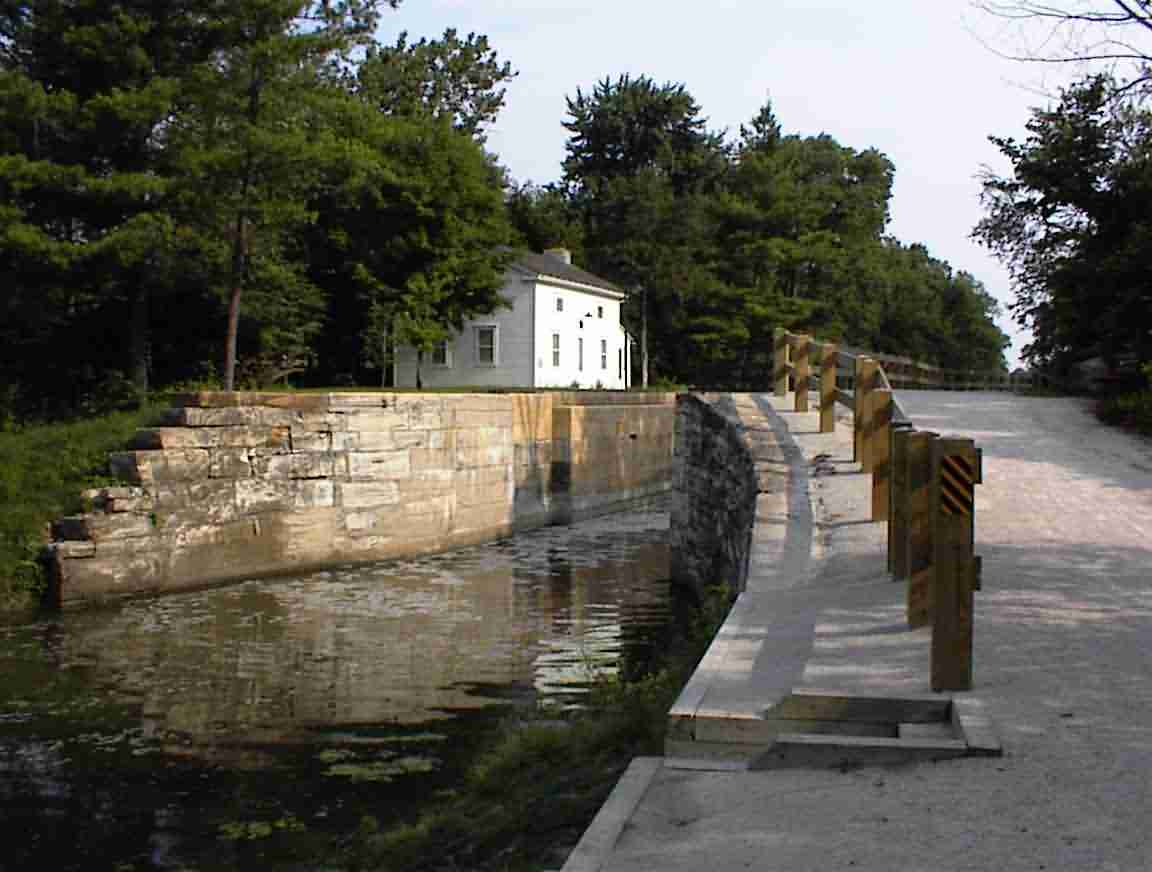
6 July - Day 38: Channahon IL to Indiana Dunes National Lakeshore Park IN – 147.8 km @ 19.4 km/h
I find that mornings are always a bit slow for me, and this was no exception. I had a leisurely breakfast and packed up while listening to National Public Radio. Just after 8 a ranger came by and collected my camping fee. Hearing I was from N.Z. she asked me to come by and sign her visitor’s book.
Toni was a typically friendly and outgoing American. Originally from Vermont, she had been in Illinois for many years but still considered herself to be a Vermonter at heart. People from Vermont are quite different to other Americans in many respects, and they are proud of it. For example they have state funded health care for the poor, have passed zoning laws to prohibit megastores like Wal*Mart, and have recently even allowed same sex marriages.
Upon hearing of my interest in canals she kindly plied me with a range of brochures and pamphlets on the canal and these have been read with a great deal of interest. I’ve resolved to get myself a book on canal construction and history as I do find it quite fascinating. Call me a frustrated historian …
As I left the campground I took the photo below of the lock keepers house. Compared to some of the tiny cottages we saw in England, it was really quite substantial and today is lived in by one of the rangers working at the park. Note the masonry locks which contrast with the ones yesterday at the Hennepin Canal which were of concrete.

I followed the trail North towards Joliet (which should be Jolliet given that is the correct spelling of his name) and like yesterday, it was a pleasant ride. As I neared the end I asked an elderly man who was walking about the route and he advised me to go with him and he would point me in the correct direction since the end of the canal was upon us.
Jerry proudly told me that he was a member of the "Zipper Club". When I asked what that was he lifted his shirt and showed me a huge scar from where he had open heart surgery. He was most interested to hear that my wife Lis was a cardiac rehab nurse and told me how he had totally changed his lifestyle since his operation. Whereas once he said he would have 17 pieces of salami with a little bread, he now was fastidious about his diet. Three days a week he went for 2 h walks on the canal and 3 days a week he went to a gym where they had a special cardiac rehab programme. He was the kind of patient who takes the extra chance he has been given and makes the most of it and spoke disparagingly of many of his fellow patients who were still "couch potatoes".
When we reached the end of the trail he gave me excellent directions and donning my helmet I ventured into the south of Joliet. I travelled along the Illinois river and then crossed over on one of the four lift bridges that they have in town. The photo below is of another one of the bridges. All have different designs but they serve the same purpose: they are raised to allow high barges to pass underneath them. They looked like larger scale models of the bridge I had seen the previous day on the Hennepin canal.
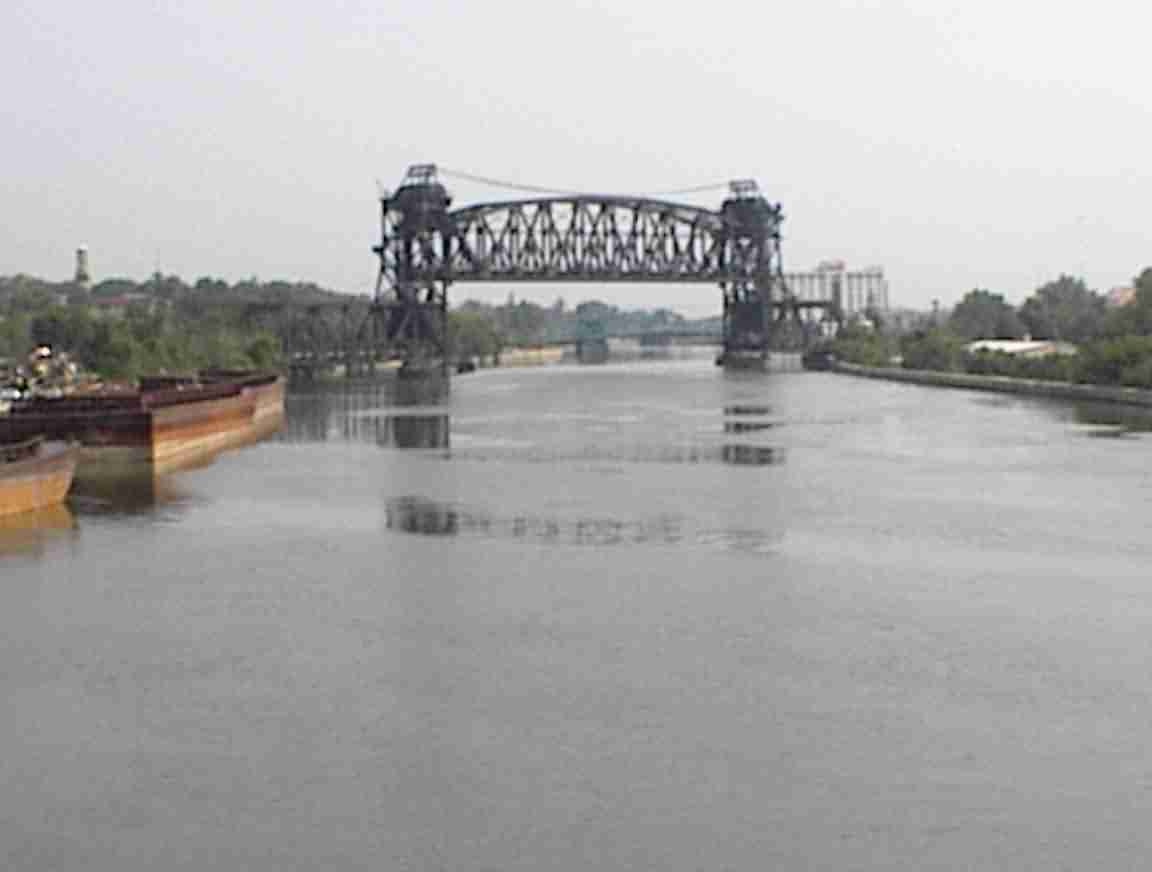
I have managed to avoid cities as much as possible throughout this trip, but today my luck ran out. Joliet was the first of several areas that I was to pass through which reminded me of the great contrasts that exist between the urban and rural areas. All were suffering different degrees of urban decay, and all got worse as the day progressed. But I get ahead of myself…
My impressions of Joliet were those of a place which had seen better days, but had not given up the fight. There were signs of urban renewal underway and in a number of places I saw where they had painted murals and it looked like many of the buildings had recently been tidied up. Apparently one of the largest ‘industries’ is the state penitentiary which explains why I saw several people in orange jump suits cutting the grass outside of the sheriff’s office. The route I was following, Highway 6, forms part of the old and famous ‘Route 66’. There are signs along the way and they even have a tourist guide, but it seems to me that they are just clutching at anything they can to get people to visit the town.
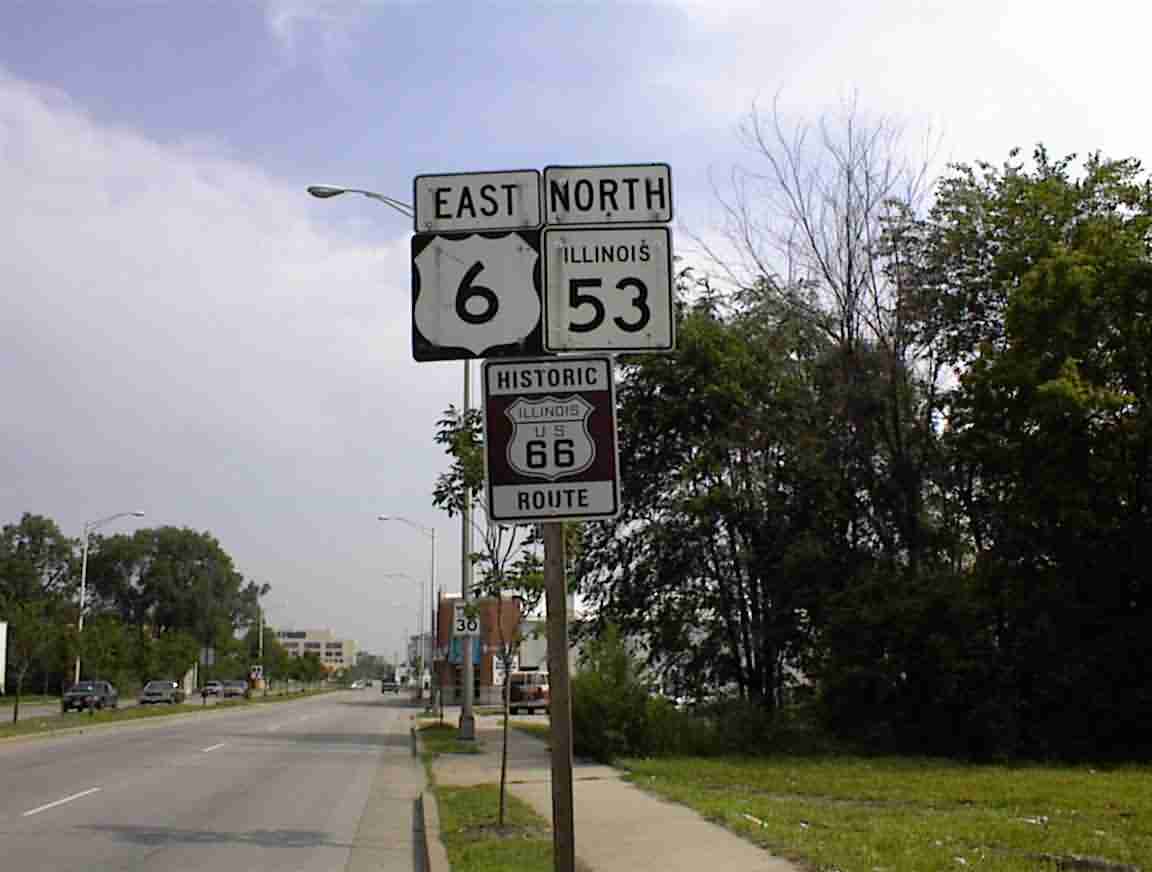
I headed East on Highway 30 and the road was a continuous series of car sales yards, malls, gas stations and fast food restaurants. The road was also under construction in places which made it less than pleasant to cycle along and I noticed a definite increase in driver aggressiveness. In fact, by the end of the day I had been honked at a total of 5 times; quite an achievement when you think that I have made it 4000+ km with only 3 people honking at me.
The route I had chosen avoided the city of Chicago but took me through Chicago Heights which was depressing. There were lots of African Americans milling about, a number of them had the definite look of prostitutes, and I heard people yelling and shouting a number of times. There was an air of desperation about the place which was only partially offset by the large number of churches that I passed; all of them local and unaffiliated to any larger denomination. I ‘motored’ through at 30 km/h and was very pleased when it was behind me. Soon I was in Dyer Indiana, which was announced not only by the sign below, but by a marked improvement in the quality of the roads.
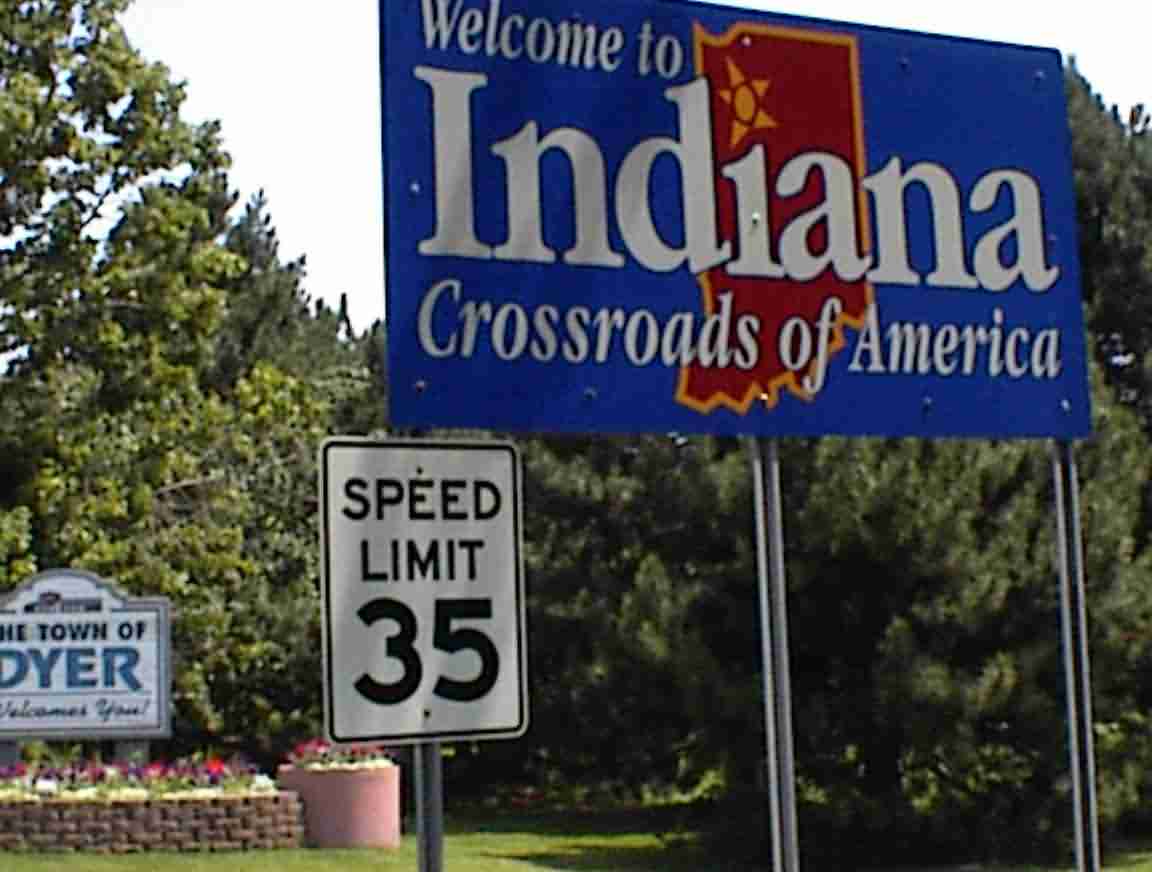
Throughout my travels I have seen signs announcing ‘Adopt A Highway’ programmes. Each state has their own signs (see below) but the basic principle is the same. A group of individuals or an organisation agrees to collect the rubbish by the side of the road for so many miles. The distances vary from 0.2 miles (the shortest I’ve seen—in a town) to 10 miles (Nevada—where else?). Churches seem to be particularly active in this programme, although I’ve only seen two Seventh-Day Adventist Churches mentioned (one in Oakhurst CA and the second in Colorado). I thought that given the expense and effort to get signs made up that there would be a major commitment, but this is not the case. What they do is go out once in the spring and a second time in the autumn and pick up the trash. Hardly seems worth the effort, but obviously it is.
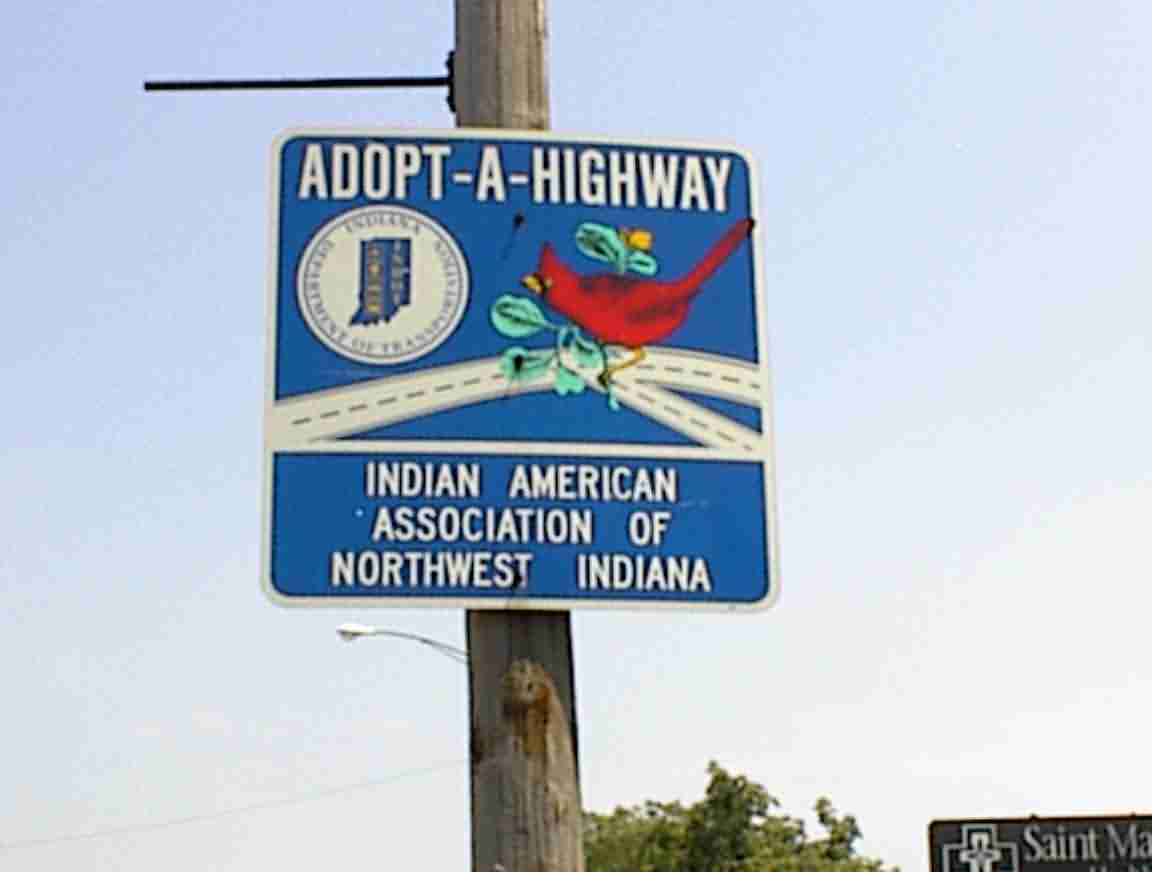
I have been amazed at what one finds by the side of the road in America. Not only is there the normal rubbish of cans, bottles, etc. but I’ve seen everything including toothbrushes, shoes (always just one—where is the other?), diapers, hats, you name it. There are enough bungee cords which, if tied together, would easily span a kilometre. I Indiana I also saw hypodermic needles and other drug paraphernalia. One interesting thing (at least when you have not much else to think about or look at) is the transitions in products. Let me explain. One of the most common commodities one finds are beer cans and bottles. In Colorado it was almost exclusively ‘Coors’ beer. However, by the time I got to Iowa ‘Budwiser’ and ‘Bud Light’ had taken over. Similarly, even though McDonalds is the most prevalent restaurant, one sees a disproportionate amount of rubbish from Wendy’s and Dairy Queen. Different clientele? Who knows ...
The road I was travelling on was famous (from an engineering perspective) since it was home to the ‘Ideal Section’. An experiment from the early 1920s, it was designed and constructed to be the best road in the world. It had 100’ right of way, good pavements, proper illumination, etc. They marked it with both a historical sign and a special plaque, both of which are shown below. I think that we often take for granted the quality of the roads that we have today and fail to recall that even 50 years ago most of the roads were unsealed.
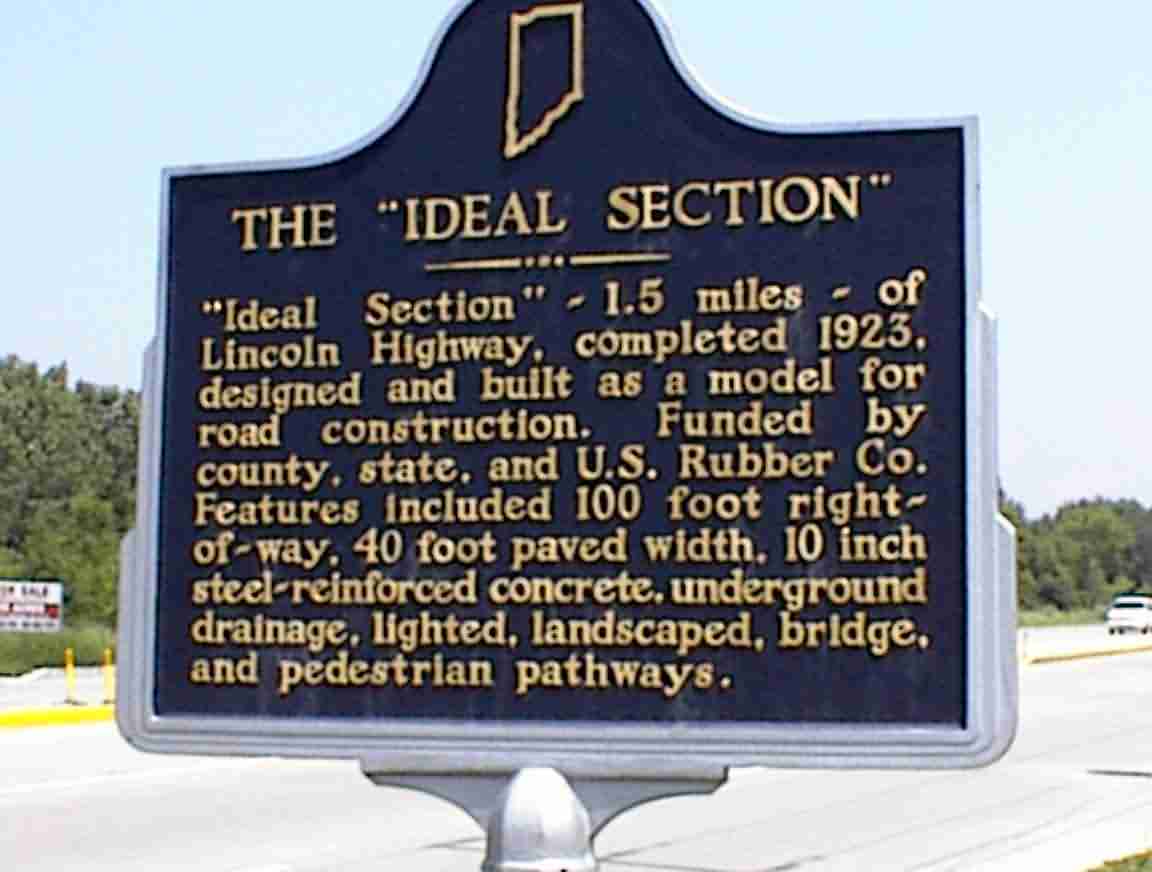
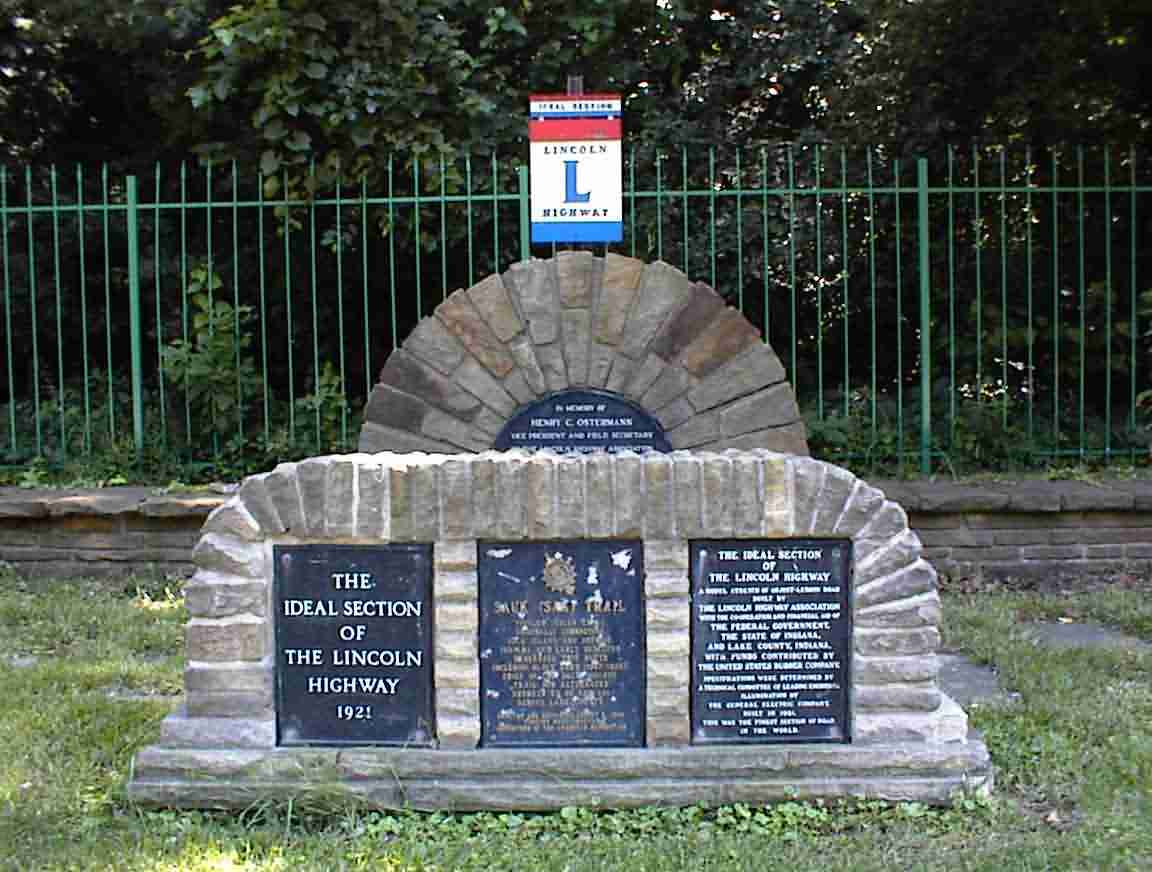
This road was called the ‘Lincoln Highway’ and it was too busy for my liking so I cut off it in Schererville and took a secondary road that paralleled it. This too became very busy and just as my nerves were getting frazzled an unspoken prayer was answered in the form of a bicycle path which headed roughly north. It skirted farmers fields before travelling along a power right of way and it provided a welcome relief to the traffic.

I met up with Jennifer who was cycling and we chatted for a while. She was my age but already had a grandchild—I was taken aback, but then I am getting on. She told me how she suffers from a rare heart disease where her heart muscle turns to fat and so she is waiting for a heart transplant. In spite of the difficulties that she has she still tries to maintain a regular exercise programme and I really respect her for that. Many of us who are healthy don’t do this and here is someone who could literally drop dead at any moment out every day.
She told me how she had a fibulator installed and it cost $USD 30,000, of which she only paid $1 to cover the phone calls from her room. The rest was paid for by medical insurance. I can see why medical insurance rates are so high here since one only needs a few operations like these to blowout any budget. Her heart transplant will be several times that. I’m in the wrong business …
We parted ways near Hammond and Jennifer advised me to avoid Gary. Since she was the second person that day to tell me that I thought that there must be some credence to the advice so I tried skirting the city to the south, only to get hopelessly lost in a maze of residential streets. I ended up back on the main road and headed North, stopping at the Indiana Visitor’s Centre for some advice.
It was an extremely nice centre, the best I’ve seen, and they were well stocked with information. I got a number of brochures on what to see and admired an old race car that was used in the Indianapolis 500 race. Some trivia: the first time a rear view mirror was used in a car was in one of these races. It was used to make sure that nobody passed the guy with the mirror and he was so successful they looked at banning them. Instead, they became standard fare on all vehicles.
I asked for advice on how to travel through Gary and they suggested a route. It was the sort of route that every cyclist has nightmares about. Not only were the roads busy, but it took me through central Gary which really must be one of the most destitute places I’ve ever seen. Abandoned buildings, people milling about, and a general air of desperation to the place. I passed by a building that had once been a library; it now had no roof or windows and looked like it had just been abandoned to the elements. I wondered what would have caused such a thing to happen, and what hope is there for the future. I went through town as fast as I could and was pleased when I left the built up areas. I stopped at a gas station to buy a map and a motorist asked which way I was going. Upon hearing I was heading east he said ‘be careful, it’s rough there’ and I replied ‘it can be any worse than it is to the west’, which he agreed. Soon I was off onto Highway 12 which took me northwards along the south side of Lake Michigan.
I was on another historical road called the ‘Dunes’ highway. This apparently was part of the shortest route across the U.S.A. (in the 1920s). There was a plaque commemorating this, as shown below. This road follows the ‘Calumet Beach Trail’ which linked Forts Dearborn and Wayne in the 19th century: today’s Chicago and Detroit.
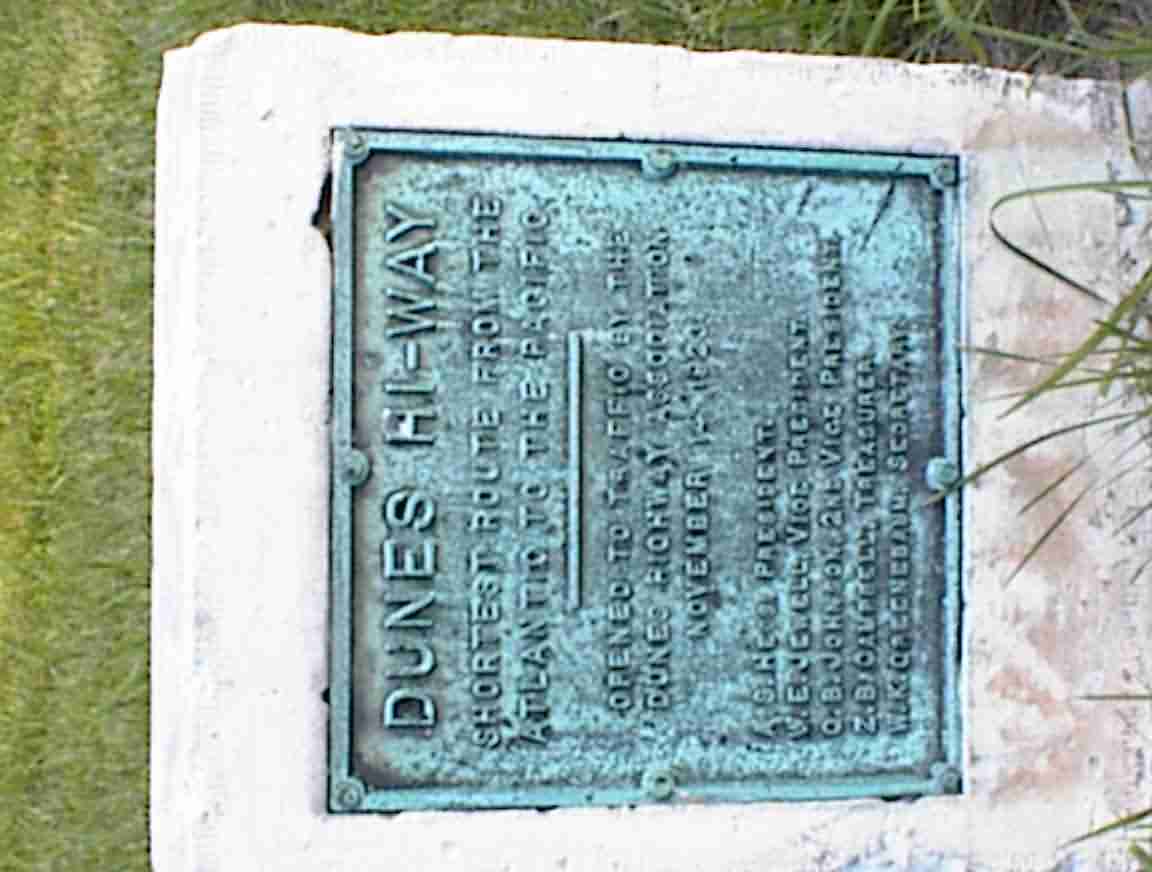
This area is known as the ‘Indiana Dunes National Lakeshore’ and is a series of beaches, marshes, oak and maple forests, and towering sand dunes. It is also the home of a number of large industries, particularly steel mills, whose development was fortunately forestalled by creating a park in 1966. As it is there is still a lot of private development and residences in the park, but at least there is now some control to the development.
It was great cycling as I reached there at about 19:00 and there was no traffic, except when trains came into the commuter stations! There were lots of forests about me and the sun cast these beautiful evening shadows over the road. I stopped at a railway station and called N.Z. before going onto the campground at the state park. It was a very nice campground and surprisingly full given that it was a Thursday evening. I found a site and read the paper over a dinner from my store of tinned food. The mosquitoes were out in force due to all the rain and I suffered after I had my shower since I didn’t want to spray myself again. So it was into my tent to listen to the radio and get to sleep. As I was tired it happened very quickly and painlessly!
loans loans loans loans loans loans loans loans loans loans loans loans loans loans loans loans loans loans loans loans loans loans loans loans loans loans loans loans loans loans loans loans loansloans loans loans loans loans loans loans insurance insurance mortgage mortgage